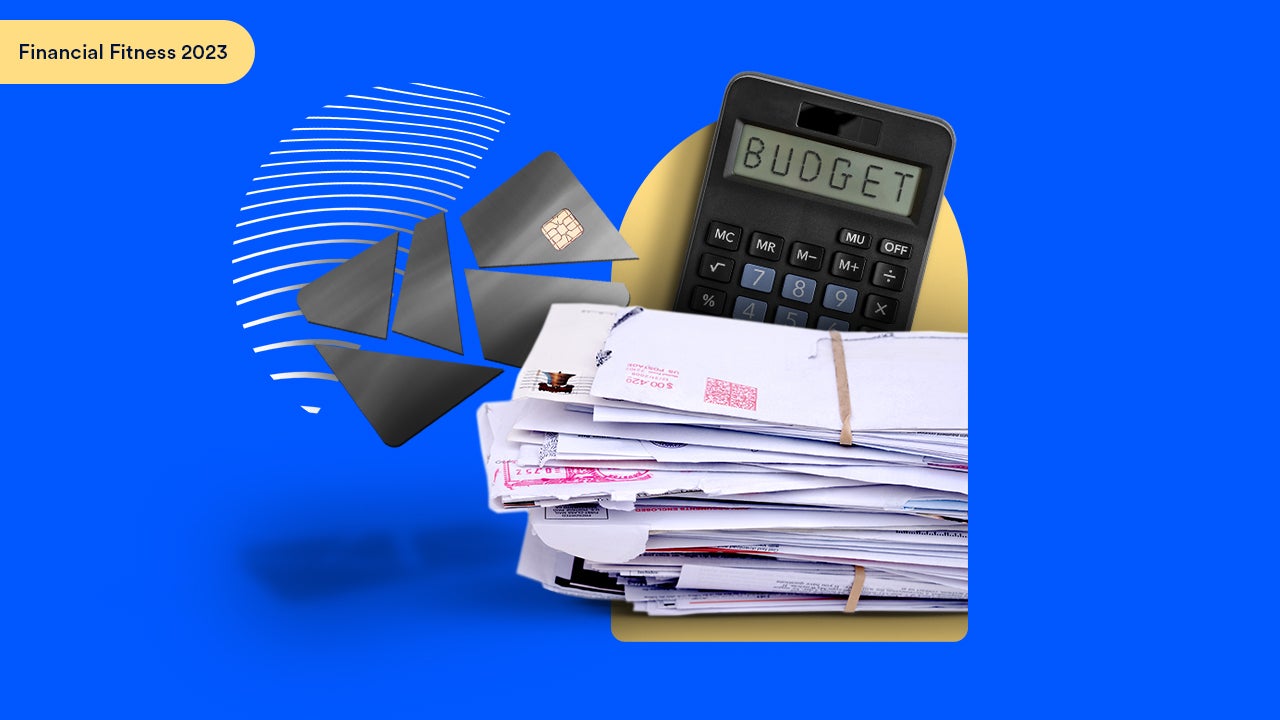List of monthly expenses to include in your budget



Key takeaways
- Fixed expenses (rent, insurance) remain constant monthly, while variable expenses (groceries, utilities) fluctuate.
- The 50/30/20 rule allocates 50% for needs, 30% for wants and 20% for savings and debt repayment.
- Tracking actual spending against your budget helps identify areas where you can cut costs and boost savings.
Creating a monthly budget is an essential strategy to help you manage money and save for financial goals. To build an effective budget, though, you need to understand what monthly expenses to factor in. Keeping track of all living expenses ensures your spending doesn’t exceed your monthly income, allowing you to pay bills comfortably and determine how much money to set aside for savings.
Understanding your complete monthly expenses list is the foundation of financial stability and helps you make better decisions about where your money goes each month.
Types of monthly expenses
Expenses in your monthly budget fall into two main categories: fixed or variable. The key difference between them lies in their predictability and frequency.
- Fixed monthly expenses remain constant from month to month. Examples include rent or mortgage payments, insurance premiums, and subscription services. These expenses are predictable, making them easier to budget since you know the exact amount needed each month.
- Variable monthly expenses fluctuate from month to month and are often discretionary. Examples include groceries, utilities, entertainment expenses and travel. Variable expenses can be challenging to predict, but you can average the total cost over the past year and allocate that amount across 12 months.
Essential monthly expenses to include in your budget
1. Housing
Housing expenses frequently consume the largest portion of monthly budgets, typically representing 25-30% of your income. This category includes monthly mortgage or rent payments, depending on whether you own or rent your home.
For homeowners, additional costs include property taxes (often escrowed in your mortgage payment), homeowners insurance, and maintenance expenses like plumbing repairs, landscaping, and periodic home improvements. Estimate maintenance costs by setting aside 1-2% of your home’s value annually.
Renters typically don’t factor in maintenance costs since landlords handle upkeep, but should budget for renters insurance to protect personal belongings.
2. Utilities
Utilities are necessities that typically represent a significant portion of your budget.
- Heating and cooling costs vary significantly by season and fuel type. Natural gas is most common, though heating oil is popular in the Northeast. Consider enrolling in budget billing plans to distribute estimated yearly costs evenly across months, helping offset high winter heating expenses.
- Electricity accounts for a major portion of utility bills, especially for households that cook or heat with electricity. Simple changes like switching to LED bulbs, unplugging devices when not in use, and adjusting thermostats can reduce consumption.
- Water and sewer costs depend on usage patterns and household size. Municipal bills often bundle water and sewer services, while households with private wells may need to budget for water treatment and septic maintenance.
3. Groceries and dining out
Whether cooking at home or dining out, food represents a significant monthly expense. Food costs are highly variable, making them an ideal area for budget optimization.
Strategies to reduce food expenses include meal planning before grocery shopping, buying generic brands, using cash-back credit cards for purchases, and limiting restaurant visits. Buying in bulk and using coupons can also generate meaningful savings. Here are 18 additional tips to save money on groceries.
4. Transportation
Transportation costs encompass daily commuting and travel expenses. For car owners, this includes monthly car payments, vehicle insurance, gas (averaging $3.44 per gallon nationally), parking fees, and routine maintenance like oil changes and tire replacements.
Public transportation users should budget for train or bus fares. Consider including periodic maintenance costs at full value rather than prorating monthly, since that’s how you’ll actually pay for them.
5. Insurance premiums
Insurance protects against financial catastrophe and should be a budget priority. Health insurance premiums are often partially covered by employers, so budget only for your portion. Additionally, set aside money monthly for copays and deductibles to prepare for medical expenses.
Other essential insurance includes auto insurance (required in most states), homeowners or renters insurance and potentially life insurance for those with dependents.
6. Debt payments
Focus on the monthly payment amounts rather than total debt balances. This includes minimum payments on credit cards, student loans, personal loans, and other debts. While making minimum payments keeps accounts current, paying more than the minimum reduces total interest and shortens repayment timelines.
Consider using the debt avalanche or snowball method to systematically eliminate debts and free up money for savings.
7. Savings contributions
Treat savings as a non-negotiable monthly expense. The 50/30/20 budgeting rule recommends allocating 20% of income toward savings and debt repayment.
Even if you can’t immediately save 20%, start with whatever amount you can manage consistently. Direct these funds toward an emergency fund (3-6 months of expenses) and retirement accounts like 401(k)s or IRAs.
Set up automatic transfers to your high-yield savings account immediately after payday. This “pay yourself first” approach ensures savings happen before discretionary spending.
Discretionary monthly expenses
8. Childcare and pet care
Families with children should budget for daycare tuition, babysitting, and child-related activities. Pet owners need to account for veterinary bills, pet food, grooming and pet-sitting services.
Since these costs can vary significantly month to month, consider averaging annual expenses to determine a monthly budget allocation.
9. Entertainment
Entertainment encompasses movie tickets, hobbies, sporting events, concerts and recreational activities. While discretionary, budgeting for entertainment helps prevent overspending on spontaneous activities.
This category often offers the most flexibility for budget cuts when needed, making it important to track spending and establish realistic limits.
10. Technology
Cell phone bills, internet service, cable or streaming subscriptions fall into this category. Many of these are fixed monthly expenses, making them easier to budget.
Consider ways to reduce costs, such as sharing streaming service subscriptions with family members, choosing phone plans with appropriate data limits, or bundling services for discounts.
11. Subscriptions and memberships
Beyond streaming services, this includes gym memberships, magazine subscriptions, and professional organization dues. Review bank statements regularly to identify recurring charges you may have forgotten about or no longer need.
12. Personal care and clothing
Budget for haircuts, skincare products, clothing and other personal items. While these expenses don’t occur monthly, setting aside money regularly prevents large, unexpected outlays.
Building your budget
Step 1: Calculate your total monthly income
Start with your after-tax income from all sources, including salary, freelance work, investment income, and any other regular income streams.
Step 2: List all fixed expenses
Document predictable monthly costs like rent, insurance premiums, loan payments, and subscription services. These form your budget’s foundation since they’re largely unchangeable in the short term.
Step 3: Estimate variable expenses
Review past months’ spending on categories like groceries, utilities, and entertainment. Calculate average monthly amounts to create realistic budget targets.
Step 4: Assign remaining income
After covering essential expenses, allocate remaining income between discretionary spending and savings. Prioritize building an emergency fund before increasing entertainment or luxury spending.
Step 5: Track and adjust
Monitor actual spending against your budget monthly. When discrepancies occur, determine whether you need to adjust spending habits or modify budget categories to reflect reality.
Bottom line
Creating a budget requires understanding all your monthly expenses, from essential housing and food costs to discretionary entertainment spending. By categorizing expenses as fixed or variable, you can better predict cash flow and identify opportunities to reduce spending or increase savings.
The key to successful budgeting is consistency — track actual expenses against your budget monthly and make adjustments as needed. This process helps ensure your spending aligns with your income and financial goals while building healthy money management habits.
Why we ask for feedback Your feedback helps us improve our content and services. It takes less than a minute to complete.
Your responses are anonymous and will only be used for improving our website.
You may also like

9 best money-saving apps of 2025

6 simple ways to stay consistent with your budget

How to make a zero-based budget

